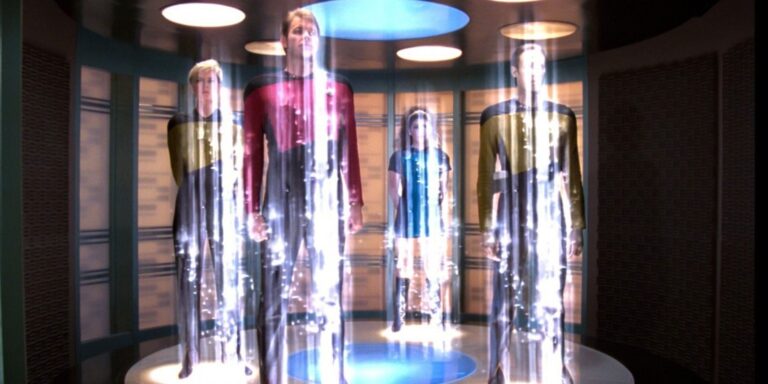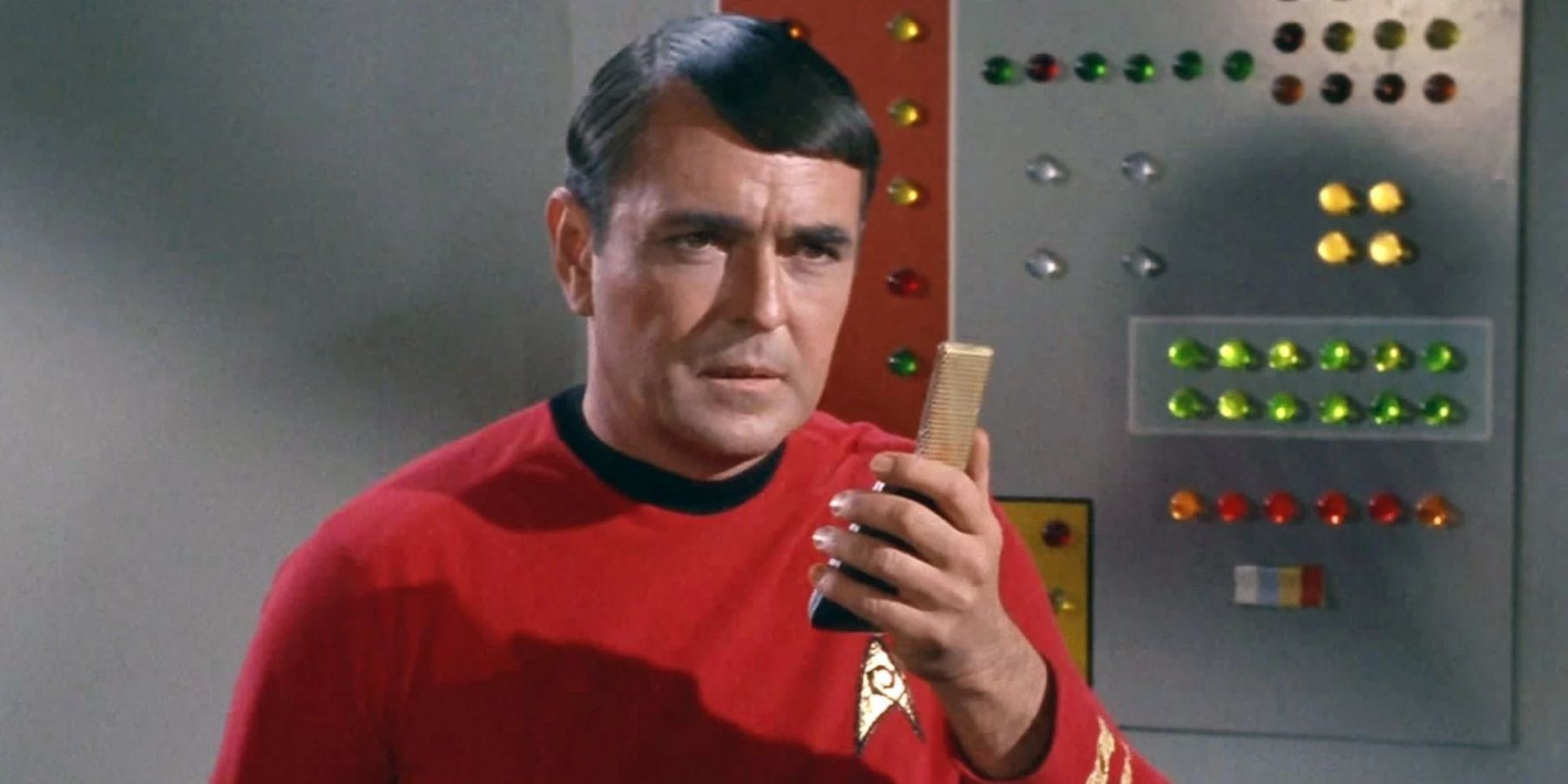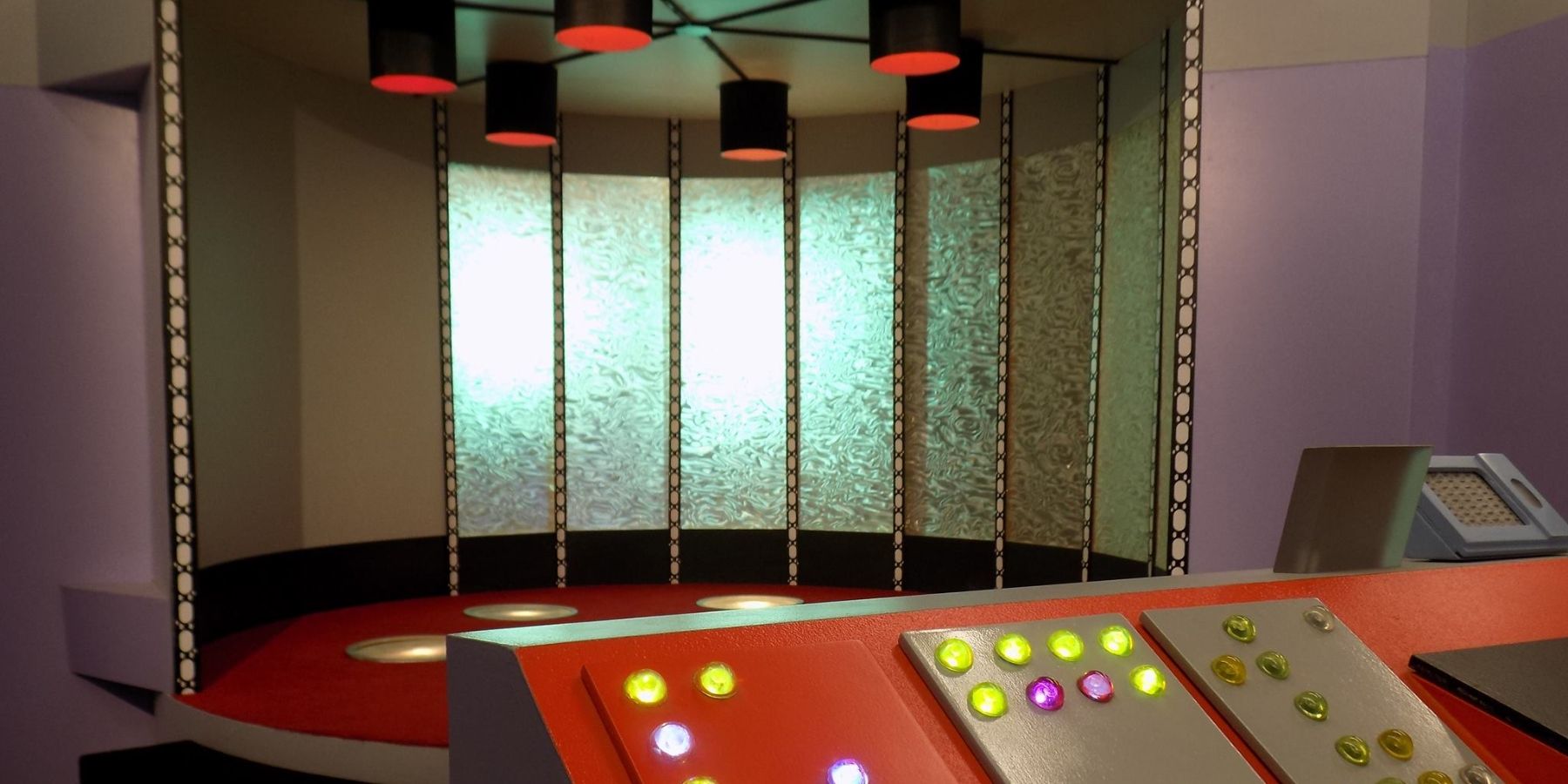
Ever since its creation in the late 1960s, Star Trek has been a pinnacle of positive science fiction, envisioning a non-dystopian future where technology has become so advanced that problems that irk mankind today are no longer an issue. World hunger is solved by the unlimited source of food created by a replicator, complex medical diagnostics can take place in a matter of seconds using a tricorder. However, nothing has become such a cornerstone of the many iterations into the franchise as the iconic transporter.
Teleportation has long been a dream of mankind, replacing arduous long-haul flights with a simple matter transportation device. With this gizmo, journeys that would typically take hours can take only seconds. The transporters are used throughout the many iterations into the franchise, from the revolutionary Original Series to the newest addition to the universe, Strange New Worlds. So fundamental are these transporters as a narrative beat that they appear in almost every episode, bar the occasional few. What’s more, they often play a key role in solving whatever problem the intrepid adventures of Starfleet face.
While there have been a few gizmos and gadgets from the show that have wiggled their way into non-fictional technological creations, unfortunately the transporter is not one of them. Real-world scientists have poured considerable research into it, with successful experiments having already been carried out on a molecular scale, but sadly we are nowhere close to the transporter technology portrayed in the show.
The biggest problem with achieving teleportation is largely down to how advanced and complex most organisms and objects are. Star Trek transporter tech works by breaking down matter such as living organisms, cargo, even gas or liquid-based matter into an energy pattern, in a process that the show calls “dematerialization.” Once each atom is broken down into this pattern, it is “beamed” across to another transporter pad, where it is converted back into matter. This is aptly named “rematerialization.” Interestingly, the famous quote “Beam me up, Scotty”, in reference to the Original Series transporter operator and chord of engineering Montgomery Scott, is actually a misquote, never uttered in the Original Series. The closest occasion was the one time Kirk said “Scotty, beam me up,” years later in the film Star Trek IV: The Voyage Home.
Within the Star Trek universe, there are some limitations to the miraculous technology, such as distance restriction and often an inability to penetrate through shields. There are of course exceptions to these rules, but they are often connected specifically to a particular episodes plot. Writers, as is often the case in long-running TV shows such as this, often break or bend the rules on transporter specifics, so it’s often hard to canonically understand their limitations. In the Original Series it’s noted that it is only possible to transport from one transporter bay to another. However, this rule has been broken multiple times, showing crew members transported from any random location to another, all without the bay. This raises the question as to why they have the designated transporter room to begin with, other than to make grand entrances and create memorable transitions.
While the process sounds simple enough on paper, like sending an email over, the process is riddled with complex problems and potential dangers. It’s no wonder that transporter operators are so highly trained within Starfleet, as the idea of breaking down matter and then reconstructing it in exactly the same way is a daunting task. It is comparable to smashing a vase into tiny pieces, then trying to glue it all back together. Of course, with the wonders of Star Trek technology, this process is vastly automated, but there are still a myriad of problems that can occur.
There have been various episodes devoted to these issues, potentially most notably the Voyager episode “Tuvix”. Tuvok and Neelix, two crew members under the controversial Capt. Janeway, are on an away mission. Upon beaming back to the ship their energy pattern was disrupted, causing it to merge into one pattern and thus rematerialize into one living organism: Tuvix. There kinds of issues are scarily common, and thus there are various characters whom audiences meet across the franchise that are hesitant or even refuse to use transporters.
Transporters are potentially one of the most fascinating technological advancements present within the show, and are often the envy of even modern day audiences. Technology has come ridiculously far since The Original Series first graced televisions, with touch screens, smartphones, and virtual reality all appearing in the real world, and making the old shows feel dated. Transporters, however, along with warp engines and replicators, make even the oldest episodes feel futuristic, setting a standard that has remained relevant more than 50 years later.

